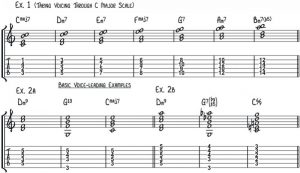
Then notice how much faster you learn the piece.Counting out the semitones of the first 3rd will give you the following:Ĭounting out the semitones of the second stacked 3rd will give you the following: When you are learning a piece of music and come across a sea of notes, quickly jot down the chord shapes using this form. O means you play the string open, no notes fretted.From left to right, the six characters represent notes on the six strings, from low to high.Quick ReviewĪs a quick review, here are the basic rules:

This simple chord notation is a tool to help us learn music faster.
#Classical guitar shed block chord how to#
“A professional is a person who has the right tools and knows how to use them.”Īnd after all, one definition of a professional is a person who has the right tools and knows how to use them. If the standard notation is making it more difficult, then we have to balance improving our reading skills with getting the gratification from playing the piece. However, sometimes we just want to play the piece. Using standard musical notation is an essential skill for advanced playing. Learning classical guitar music, it helps to get comfortable reading notes all over the fretboard. But what about learning to actually read music? This way, we can simplify a vast ocean of notes into a couple of simple symbols. Just jot down the “code” above or below the measure it represents in your music. This is especially useful for the higher positions on the neck if you are not completely comfortable reading standard notation in the higher positions. In arpeggio pieces, where the left hand is playing a chord shape that changes every measure or two, you can use this shorthand to quickly “map out” how your left hand will move. There are many ways you can use this in your practice. How to use chord shorthand in your guitar practice It is a tool to help you, not a complete package. In short, TAB only tells you what notes are to be played and where.

You can jot 32000X under that bar in your music and lump all those notes into one easy shape. So…in a piece of music, this first measure Numbers represent which fret is to be played.An O means that you play the string open, with no left-hand fingers touching it.An X means that you do not play that string it all.

From left to right, they represent the strings (low E on the left to high E on the right). But this “code” is a great tool that requires no other knowledge. Of course, we could use other devices (such as theoretical analysis) as well. We can use numbers to notate the left-hand finger positions on the neck. A shorthand can help us to simplify the left-hand shapes so we learn them more easily. On the page, the music may look like a sea of notes. So we could think of it as a chord or chord “shape”. We may not know what chord it is, but each finger is on a different string. Often, the left hand is playing a combination of notes that resemble a chord. In our music, it can be convenient to use a type of “shorthand” to jot down the left-hand pattern. It may be high on the neck or use open strings in an unusual way.įor these confusing times, it helps to have a special trick you can use to remember the new patterns. And more, it may be unlike any other chord we know. The more of these patterns we can find, the easier it becomes to memorize and play guitar music.īut sometimes, we don’t know the chord. We can learn to see, for example, a C chord in the music or in our hand on the guitar neck. Much of learning guitar pieces is pattern recognition.


 0 kommentar(er)
0 kommentar(er)
